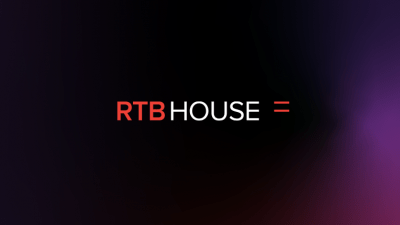Last Updated on: 26th May 2024, 07:20 pm
Consumer tech companies, like Samsung, operate in an environment with high average order values (AOVs) but long gaps between conversions. This means it is essential to maximize individual sales and build brand loyalty that lasts long after a purchase is complete. Companies can best do this by building direct connections with their customers across a variety of sales channels. However, this means overcoming the challenges posed by the loss of access to third-party cookies in the oncoming cookieless future.
For any company, value maximization is key. With most companies offering a wide portfolio of consumer tech, often for very different audiences, it is important to optimize campaigns to only show users products that they will actually want. Unfortunately, maximizing campaign efficiency also has become increasingly challenging as we approach the cookieless world.
This is where the experts make all the difference. Let’s dive into how tech brands can make direct connections with their customers and build long-term brand loyalty in an uncertain market.
Table of Contents:
- The right creative, delivered to the right user, in the right moment
- Deep Learning vs Machine Learning: faster, smarter, and more flexible
- Future-proofed advertising for the cookieless world
- Deep Learning algorithms provide deeper insight compared to Machine Learning
- Use Deep Learning to target product ads in the cookieless future
- RTB House’s expertise in cookieless can give your marketing an edge
The right creative, delivered to the right user, in the right moment
The big advantage of online advertising is personalization. Rather than trying to design a single ad that appeals to as broad an audience as possible, marketers have access to a wealth of data that allows them to tailor every advert to fit an individual customer. Brands can also identify the best time to scale up their campaign–for example, during promo periods–based on user activity. This provides tech brands with a huge opportunity to make a connection, and potentially encourage loyalty, by demonstrating that they understand a customer as an individual.
Deep Learning vs Machine Learning: faster, smarter, and more flexible
At RTB House, we achieve this by using a technology called Deep Learning. This powerful form of Machine Learning is able to understand vast datasets and derive insights that can be used to predict what sort of content or products a customer is interested in. Based on internal studies, Deep Learning is approximately 50% more effective at delivering results than traditional Machine Learning tools.
So how does it work? Unlike many other advertisers, we only use first-party data in personalized retargeting campaigns, and then add context to this data by utilizing Deep Learning technology. Once the raw data has been processed, the algorithms use this information to select products that customers are interested in and then display them on selected creatives in specific online placements. This enables you to meet users where they are, with a personalized message.
Our approach has proven to be effective. For example, RTB House was able to drive a 34% click-through rate (CTR) at a 39% lower cost per click (CPC) for Hoang Ha Mobile using Deep Learning tools.
That said, past performance does not equate to future results, which is why it is essential to keep on top of emerging trends.
Future-proofed advertising for the cookieless world
One of the big changes coming to the advertising industry is the end of third-party tracking cookies. These cookies allowed the tracking of individual users across websites, serving as a tool for one-to-one personalization at the expense of user privacy. Google Chrome has decided that this gain is not worth the damage to user privacy, and is now retiring third-party tracking cookies, as the last major browser to do so.
Fortunately, RTB House saw the writing on the wall some time ago, and we have been working hard to find alternative ways to deliver personalized ads long before Google’s announcement. To this end, we have developed an approach that leverages first-party data to understand what customers want, without undermining their privacy.
To achieve this, RTB House has been working closely with Google and a number of other industry leaders to define new tools for Google Chrome’s Privacy Sandbox. In 2020, RTB House was the first direct service provider to successfully implement the Privacy Sandbox’s FLEDGE simulation, globally buying advertising impressions for almost 500 advertisers.
FLEDGE is based on observing an individual’s behavior on the advertiser’s website, allowing the ad tech vendor to group similar users into so-called interest groups. Thanks to RTB House’s Product-level TURTLEDOVE and Outcome-based TURTLEDOVE–both vital elements of FLEDGE–ad tech partners can also save information about specific users, such as which products they visited in order to display them on ads. While being useful for personalization, due to the technical design of these tools, they won’t allow user tracking. This enables advertisers to precisely target users based on their behavior, without ever needing to know who that user is, or track where they go across the internet.
Deep Learning algorithms provide deeper insight compared to Machine Learning
The big differentiator between Deep Learning and Machine Learning is the former’s ability to understand and process many layers of data. Each layer is able to extract increasingly complex features from raw input, and it is possible to do this very rapidly.
In our context, lower layers may identify a user group, while a higher layer could identify specific interests within that group. This enables algorithms to determine the type of content a user is likely to engage with, and display it to them.
As Deep Learning algorithms examine more data, they are able to identify patterns without direct human intervention, which makes them far more efficient at self-learning compared to legacy solutions. This approach has proven effective, and RTB House’s solution is able to drive up to 47% higher video completion rates and up to 33% better viewability compared to global market benchmarks.
Use Deep Learning to target product ads in the cookieless future
Displaying personalized products on ads when the user has previously visited an advertiser’s website is possible using FLEDGE…but how can we do so when the user hasn’t?
Let’s look at a use case involving a leading consumer tech brand, such as Samsung, which might be running a Branding Campaign containing a wide range of devices. Many such brands have a product portfolio that contains both high-end models, such as the Samsung Galaxy S series, and mid-range models, such as the Samsung A line. The last thing you want is to waste an ad impression by showing a premium model to someone in the market for something more affordable, or down-sell a user who was considering a top-of-the-line smartphone by showcasing less pricey models.
In the past, this approach would rely heavily on tracking cookies and using data brokers which indicate user interests. Once these cookies are retired, advertisers will need to rely more on other, more privacy-preserving approaches. This brings contextual advertising back to the fore. With Deep Learning-powered Context AI, we are able to analyze data on an article level.
Let’s get back to the use case. If you wanted to sell Samsung products, you might decide to show awareness ads for the Samsung A50 on a tech gadget article about budget smartphones. However, articles showcasing the latest releases would be a better fit for ads for a flagship device, such as the Galaxy S22 Ultra. By understanding context, we can also target users who are looking at competitor devices that use the same operating system. This would mean that you have an opportunity to sell yourself to users who may not have considered your products yet.
RTB House’s expertise in cookieless can give your marketing an edge
The important takeaway here is that the advertising industry is about to change significantly, and many companies are not ready to deal with it. RTB House has devoted significant time and energy to becoming a leader in the cookieless space, and that makes us perfectly positioned to help your company navigate the cookieless future.
Most importantly, our internal studies have shown that we are able to implement cookieless targeting methods, delivering real impressions using the emerging privacy-preserving APIs. This means that your brand can gain a significant first-mover advantage simply by partnering with the right provider.
Would you like to know more? Reach out to us today and let’s talk about how RTB House can help you future-proof your advertising strategy for the cookieless future.





